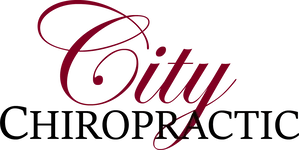Fight or Flight Stress Response

- posted: Mar. 28, 2017
Hans Selye, a pioneering researcher on cell function and developer of the modern stress theory (General Adaptation Syndrome, 1936), identified three stages of adaptation which a person goes through in response to stress. They are: Alarm, Resistance and Exhaustion.
In the alarm stage, the body recognizes a challenge or threat and goes into a fight or flight response. This releases the stress hormones adrenaline and cortisol, resulting in appropriate physiological changes. Some of the short-term physiological responses to stress include:
Increased
- HR and BP: necessary for exertion, circulation of hormones and energy substrate
- FA in Blood: conversion to glucose for energy
- Clotting Factors: wound healing
- Blood Sugar: (glycogen/protein breakdown) energy for fight or flight
- Signal Detection, Fear, and Anxiety: keep stress hormones flowing; reactive/responsive
Decreased
- Regulation of LDL Uptake & HDL Production: clotting and stress hormone manufacturing
- Insulin Receptor Down Regulation: prevent storage of glucose
- Cellular Immunity: energy conservation
- Sex Hormone Binding Globulin (SHBG): leads to increased cellular division
- Attention, Learning and ST Memory: want to be reactive, not analytical
- Regulation of Relaxation/Pleasure Centers: detrimental to survival
- Growth Hormone & Digestion: not necessary for short-term survival
We are hard-wired for this response and these changes represent an intelligent response to stress designed to buy time for the individual to either change the environment (fight) or remove themselves from the environment (flight).
Is stress always a bad thing? Stress can come in three forms: chemical, physical and mental/emotional. Selye recognized that negative stress (distress) caused biological damage, while positive stress (eustress) caused biological growth. An example of eustress would be resistance training. By challenging the muscles with increasing weight, we break down muscle tissue that results in the development of larger and more numerous muscle fibers capable of handling the increased demands of our environment. Of course, carried beyond our capabilities, we risk the creation of distress through muscle strains and ligament sprains that can compromise joint health.
In the resistance stage, the body continues to adapt to a constant, stressful situation with its physiological resources. You may have noticed that the above list represents many of the markers used to define chronic illness such as heart disease, diabetes and ADD/ADHD. If the stress remains, these physiological resources may eventually get depleted, leading to exhaustion.
Due to chronic stress, which most people find themselves in today with regards to family, work, financial, and/or social situations, more and more people are experiencing the exhaustion phase of the stress response. If this stage occurs, the stressful challenge becomes overwhelming, the immune system is impaired and long-term damage, illness and death may result. Stress in its many forms, then, is the true underlying cause of chronic illness in western civilization.
Jack Canfield, the author of the Chicken Soup for the Soul books, rightly states that the outcome (O) to any event is the result of the event (E) itself times our reaction (R) to that event (O = E x R). If we realize that we can control the reaction to an event, though not always the event itself, then we can ultimately control the outcome and reduce the fight or flight response.
Healthy lifestyle choices, therefore, can help make us stronger and more resilient so that life‘s challenges are not as stressful. Along with a healthy nervous system, the critical communicator within the body that is maintained through chiropractic, healthy habits help with stress reduction and maintain optimal health.

- posted: Mar. 28, 2017
Hans Selye, a pioneering researcher on cell function and developer of the modern stress theory (General Adaptation Syndrome, 1936), identified three stages of adaptation which a person goes through in response to stress. They are: Alarm, Resistance and Exhaustion.
In the alarm stage, the body recognizes a challenge or threat and goes into a fight or flight response. This releases the stress hormones adrenaline and cortisol, resulting in appropriate physiological changes. Some of the short-term physiological responses to stress include:
Increased
- HR and BP: necessary for exertion, circulation of hormones and energy substrate
- FA in Blood: conversion to glucose for energy
- Clotting Factors: wound healing
- Blood Sugar: (glycogen/protein breakdown) energy for fight or flight
- Signal Detection, Fear, and Anxiety: keep stress hormones flowing; reactive/responsive
Decreased
- Regulation of LDL Uptake & HDL Production: clotting and stress hormone manufacturing
- Insulin Receptor Down Regulation: prevent storage of glucose
- Cellular Immunity: energy conservation
- Sex Hormone Binding Globulin (SHBG): leads to increased cellular division
- Attention, Learning and ST Memory: want to be reactive, not analytical
- Regulation of Relaxation/Pleasure Centers: detrimental to survival
- Growth Hormone & Digestion: not necessary for short-term survival
We are hard-wired for this response and these changes represent an intelligent response to stress designed to buy time for the individual to either change the environment (fight) or remove themselves from the environment (flight).
Is stress always a bad thing? Stress can come in three forms: chemical, physical and mental/emotional. Selye recognized that negative stress (distress) caused biological damage, while positive stress (eustress) caused biological growth. An example of eustress would be resistance training. By challenging the muscles with increasing weight, we break down muscle tissue that results in the development of larger and more numerous muscle fibers capable of handling the increased demands of our environment. Of course, carried beyond our capabilities, we risk the creation of distress through muscle strains and ligament sprains that can compromise joint health.
In the resistance stage, the body continues to adapt to a constant, stressful situation with its physiological resources. You may have noticed that the above list represents many of the markers used to define chronic illness such as heart disease, diabetes and ADD/ADHD. If the stress remains, these physiological resources may eventually get depleted, leading to exhaustion.
Due to chronic stress, which most people find themselves in today with regards to family, work, financial, and/or social situations, more and more people are experiencing the exhaustion phase of the stress response. If this stage occurs, the stressful challenge becomes overwhelming, the immune system is impaired and long-term damage, illness and death may result. Stress in its many forms, then, is the true underlying cause of chronic illness in western civilization.
Jack Canfield, the author of the Chicken Soup for the Soul books, rightly states that the outcome (O) to any event is the result of the event (E) itself times our reaction (R) to that event (O = E x R). If we realize that we can control the reaction to an event, though not always the event itself, then we can ultimately control the outcome and reduce the fight or flight response.
Healthy lifestyle choices, therefore, can help make us stronger and more resilient so that life‘s challenges are not as stressful. Along with a healthy nervous system, the critical communicator within the body that is maintained through chiropractic, healthy habits help with stress reduction and maintain optimal health.
Office Hours
Monday
9:00 am - 6:00 pm
Tuesday
Closed
Wednesday
9:00 am - 6:00 pm
Thursday
2:00 pm - 6:00 pm
Friday
9:00 am - 6:00 pm
Saturday
Closed
Sunday
Closed
